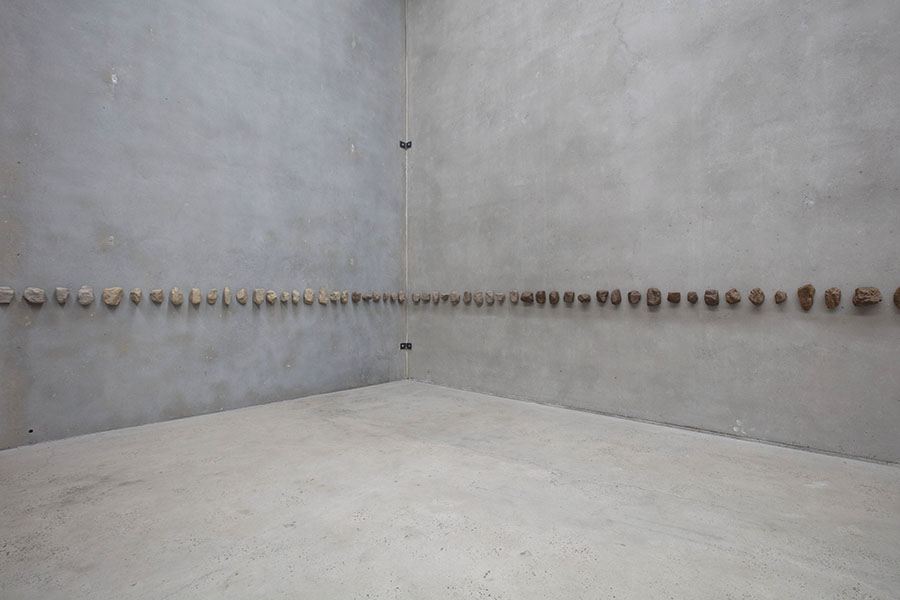Smith brings the invisible into the field of perception. Through the process of developing her glazes, elements such as the constitution of soil, leakages from human chemical intervention, and other invisible phenomena are illuminated through burning and glazing; the colour of the final object corresponds to this information.
Image: Yasmin Smith, Forest, 2022, coal fly ash glaze on stoneware slip (11 glazes). Image courtesy of the artist and The Commercial, Sydney
YASMIN SMITH
Smith’s work delves into the intelligence of ecologies, using site-specific responses as a guide for aesthetic and conceptual outcomes. Smith works within the discipline of ceramics, she collects plant specimens and, through a process of casting, replicates their forms. The original collected specimen is subjected to a precise treatment: it is burnt slowly over the course of a week before the ashes are used in a specific ratio to formulate the glaze that decorates the ceramic form. Her practice is a study of the human impact on our surroundings, through pollution and civilisation, and revealing the alternate knowledge systems of the natural world.
Smith brings the invisible into the field of perception. Through the process of developing her glazes, elements such as the constitution of soil, leakages from human chemical intervention, and other invisible phenomena are illuminated through burning and glazing; the colour of the final object corresponds to this information. The delicacy of this thin layer of glaze contrasts the weight of the information compressed inside it, a colossal span of time, record of history and depth of relationships are flattened into a decorative sheen. Seine River Basin (2019) saw Smith collect twenty-two Willow tree branches from four sections of the Seine River, she traced the river from its spring in Dijon, and along points of convergence with other waterways such as the Yonne, and the Canal Saint-Denis. The branches were then treated with her usual process. Each one was replicated twice, creating a total of forty-four works, and each pair was then installed vertically opposite the other to create the illusion of a reflection. In so doing, Smith developed a cartography of the Seine traced not through its relationships to city or human infrastructure, but as an ecology that reaches far beyond the confines of anthropocentric imaginings. The forms are ghostly, reproduced with an eerie precision. The pale and muddy milky glaze evokes an association with bones or marrow, suggestive of the masticated skeletal remains of some greater entity. The ivory colour is tinted with a warm hue, developed through the reaction between the calcium and iron embedded in the site from which the specimen was sourced.
Smith highlights the knowledge encoded within ecology. This is an intelligence that inverts a colonial notion of progression, it is destruction that is crucial for creation. This echoes Indigenous knowledge of back-burning Country, where there is an understanding of death as a vital precursor to life, and not as its end or antithesis. Smith’s Queer identity and matrilineal Sri Lankan heritage influence this overturning of convention, she says, and delineate a relationship to land that is embodied and receptive, rather than extractive or imperious. Ecologies are reliant on a cycle or web, a rhizome that reaches out expansively and deeply. This lateral conception of relationality challenges the colonial and capitalist one of hierarchy. Smith’s conceptual interrogations and methodology can be understood to be equally lateral; she works in collaboration with scientists, arborists, and activists and therefore engages in a horizontal network of her own.
Smith’s Samstag Scholarship will go towards Smith undertaking further research in Europe, examining the themes of pollution, climate breakdown, and environmental and social justice.
Essay written by Gemma Topliss, September 2023. Gemma Topliss is a writer and artist from Naarm/Melbourne.

